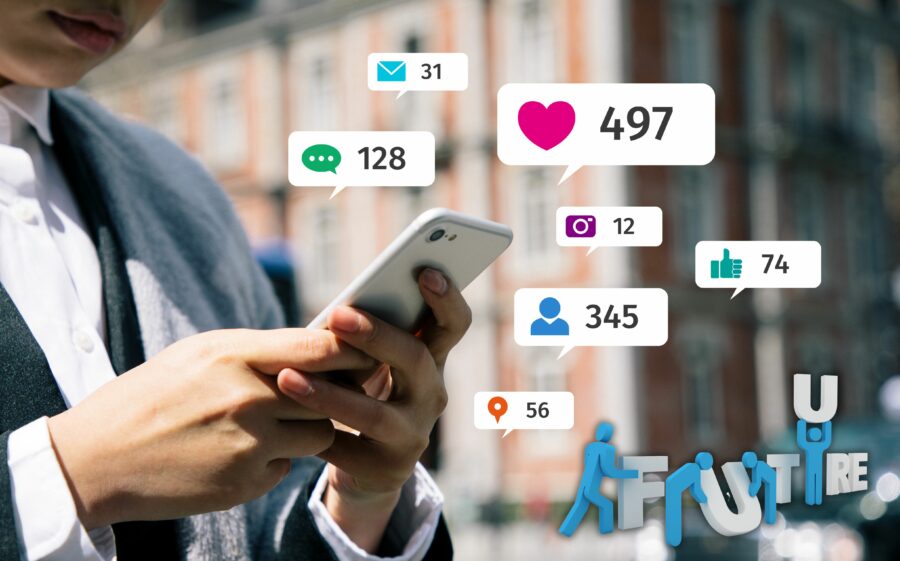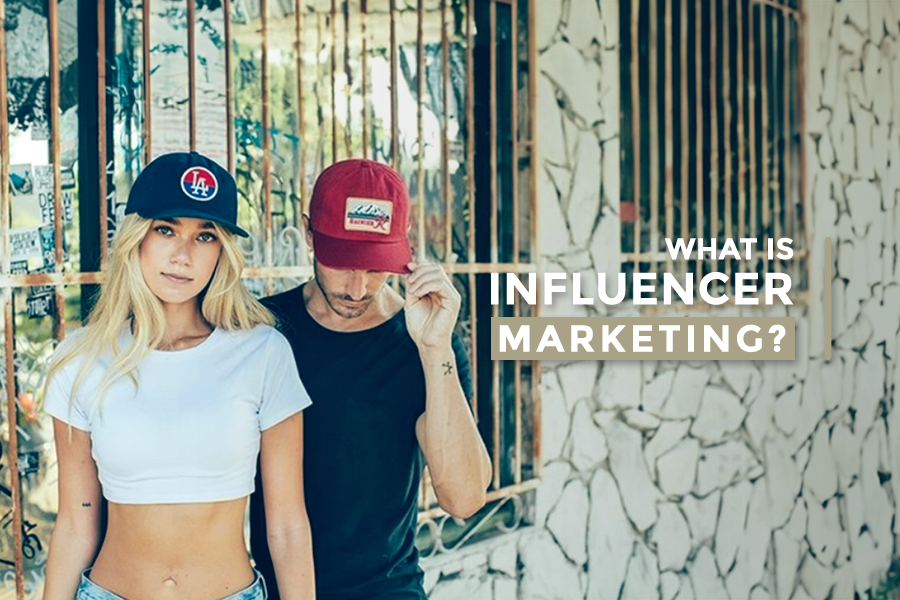In today’s digital landscape, where social media has become an integral part of our lives, influencer marketing has emerged as a powerful strategy for brands to reach their target audiences. With the rise of social media influencers, businesses have recognized the immense potential of leveraging their influence to promote products and services. This article explores influencer marketing, its definition, importance, working mechanism, benefits, best practices, and associated challenges.
Introduction:
In recent years, the marketing landscape has undergone a significant transformation. Traditional advertising methods are no longer as effective in capturing consumers’ attention, who are constantly bombarded with advertisements. As a result, brands have turned to influencer marketing as an alternative approach to connect with their target market more authentically and engagingly.
What is Influencer Marketing?
Influencer marketing is a collaborative form of marketing where brands partner with influencers, individuals with a dedicated and engaged following on social media platforms, to promote their products or services. These influencers, often considered experts or trendsetters in their respective niches, have built credibility and trust with their audience, making their recommendations and endorsements highly influential.
Importance of Influencer Marketing
Influencer marketing holds significant importance for brands in the digital age. It provides an opportunity to tap into the vast reach and influence of social media personalities, allowing businesses to expand their online presence and connect with their target audience on a more personal level. By leveraging the trust and credibility influencers have established, brands can effectively communicate their message and increase brand awareness.
Influencer Marketing Statistics
Influencer marketing has experienced significant growth, reaching a market value of $21.1 billion in 2023. This marketing strategy has proven highly profitable for businesses, with an impressive return on investment (ROI) of $5.2 for every $1 spent on influencer marketing. The popularity of influencer marketing is evident from the surge in online searches, as there has been a remarkable 465% increase in Google searches for the phrase “influencer marketing” since 2016.
The effectiveness of influencer marketing is widely acknowledged, with 90% of survey respondents affirming its efficacy as a form of marketing. This high level of confidence in influencer marketing stems from the ability of influencers to engage and connect with their audiences authentically and relatable.
Instagram has emerged as the leading platform for influencer marketing, with 67% of brands utilizing this social media platform to collaborate with influencers. Instagram’s visual nature and extensive reach make it an ideal platform for promoting products and services through influencer partnerships.
The growth of influencer marketing has also led to the emergence of numerous platforms and agencies dedicated to facilitating influencer collaborations. In the past five years alone, 1360 influencer marketing-focused platforms and agencies have entered the market. These platforms provide valuable services such as connecting businesses with suitable influencers, managing campaigns, and tracking performance metrics.
How Does Influencer Marketing Work?

Influencer marketing involves several key steps to ensure successful collaborations between brands and influencers.
1) Identifying the Right Influencers:
One of the critical aspects of influencer marketing is finding the right influencers to collaborate with. Brands must identify influencers who align with their values, target audience, and campaign objectives. This process requires thorough research and analysis. Brands can leverage social media listening tools and analytics to identify influencers with a relevant and engaged following.
Factors such as follower demographics, engagement rates, content quality, and relevance to the brand’s niche should be considered when evaluating potential influencers. It is important to choose influencers who genuinely resonate with the brand’s message and authentically connect with their audience.
2) Building Relationships with Influencers:
Building solid relationships with influencers is key to long-term success in influencer marketing. Brands must approach influencers with personalized messages, demonstrating a genuine interest in their work. Brands can engage with influencers by liking, commenting, and sharing their content, attending their events, or even sending them personalized gifts. By investing time and effort in building relationships, brands can foster trust and mutual understanding. This leads to more effective collaborations and increases the likelihood of influencers promoting the brand authentically.
3) Creating Effective Campaigns:
Once the right influencers are identified and relationships are established, brands must work closely with influencers to create effective campaigns. Clear communication is vital to ensure that both parties understand the campaign goals, brand guidelines, and key messages. Brands should provide influencers with a detailed brief outlining the objectives, deliverables, and specific guidelines or restrictions.
However, it’s important to balance giving influencers creative freedom and maintaining brand consistency. Influencers’ creativity and authenticity resonate with their audience, so brands should encourage them to bring their unique voice and style to the campaign.
4) Monitoring and Measuring Performance:
Monitoring and measuring the performance of influencer marketing campaigns is crucial to assess their effectiveness and make data-driven decisions. Brands can track metrics such as reach, engagement, click-through rates, conversions, and sales attributed to the influencers’ content. This information helps brands understand their influencer marketing efforts’ ROI (return on investment) and make adjustments if necessary. Many influencer marketing platforms and tools provide analytics and reporting features to simplify this process.
5) Compliance with Regulations and Guidelines:
Influencer marketing is subject to regulations and guidelines set by advertising authorities and platforms. For example, the Federal Trade Commission (FTC) in the United States requires influencers to disclose their sponsored content. Brands should ensure that influencers they work with understand and comply with these regulations.
Clear disclosure labels such as “#ad” or “#sponsored” should be used to indicate that a post is sponsored content. By adhering to these guidelines, brands can maintain transparency, credibility, and trust with their audience.
6) Long-term Partnerships and Brand Ambassadors:
In addition to short-term campaigns, brands can establish long-term partnerships with influencers to become brand ambassadors. This approach allows for more authentic and consistent brand representation over an extended period.
Brand ambassadors develop a deeper understanding of the brand, its values, and its products or services, resulting in more genuine endorsements and recommendations. Long-term partnerships enable brands to tap into an influencer’s creativity and expertise to co-create content, develop product lines, or collaborate on new campaigns.
7) Micro-Influencers and Niche Marketing:
While many brands are drawn to collaborating with macro-influencers with a massive following, micro-influencers (influencers with a smaller but highly engaged audience) and niche influencers can offer unique advantages. Micro-influencers often have a more specific and dedicated following, allowing brands to target niche markets effectively. Their audience trusts their recommendations more, making micro-influencers valuable for generating authentic word-of-mouth marketing. Working with a mix of macro-influencers, micro-influencers, and niche influencers can provide a more diverse and comprehensive influencer marketing strategy.
8) Influencer Marketing Platforms:
To streamline the influencer marketing process, brands can leverage influencer marketing platforms. These platforms act as intermediaries, connecting brands with influencers and providing tools for campaign management, content creation, and performance tracking. Influencer marketing platforms can help brands discover influencers, manage collaborations, and measure the success of campaigns in a more organized and efficient manner. However, choosing the right platform that aligns with the brand’s specific needs and objectives is essential.
Benefits of Influencer Marketing

Influencer marketing has become a popular strategy for brands to reach their target audience and achieve their marketing goals. Let’s delve deeper into the benefits of influencer marketing and explore how it can help businesses enhance their online presence and drive growth.
1) Increased Brand Awareness
Influencer marketing is an effective way to increase brand awareness and reach a wider audience. By partnering with influencers with a significant following and influence in their respective niches, brands can tap into their existing fan base and expose their products or services to a larger pool of potential customers. Influencers have built trust and credibility with their followers, making their recommendations and endorsements more likely to be noticed and trusted.
2) Enhanced Brand Trust
Trust is a crucial factor in consumer decision-making. Influencers have cultivated strong relationships with their audience through authentic and relatable content. When influencers endorse a brand or product, their followers perceive it as a personal recommendation from someone they trust. This association with influencers can significantly enhance brand trust, leading to higher conversion rates and customer loyalty.
3) Improved Audience Targeting
Influencers specialize in creating content that caters to specific niche interests. By partnering with influencers who align with their target market, brands can effectively reach and engage their desired audience segments. Influencers have already established a community of followers who share common interests, allowing brands to tap into a pre-qualified audience more likely to be interested in their offerings. This targeted approach maximizes the impact of marketing efforts and increases the chances of conversion.
4) Higher ROI
Influencer marketing often offers a higher return on investment (ROI) than traditional forms of advertising. Influencers create content that resonates with their audience, increasing engagement and conversion rates. According to a survey by Influencer Marketing Hub, 89% of marketers reported that influencer marketing ROI is comparable to or better than other marketing channels. Additionally, influencer partnerships can be cost-effective, especially when compared to large-scale advertising campaigns. Brands can collaborate with micro-influencers or engage in long-term partnerships to achieve significant results at a fraction of the cost.
5) Authentic Content Creation
One of the unique advantages of influencer marketing is the ability to leverage authentic content creation. Influencers are skilled at producing engaging and relatable content that aligns with their brand and resonates with their audience. This authenticity can help brands break through the clutter of traditional advertisements and connect with consumers on a more personal level. User-generated content (UGC) generated through influencer collaborations can also be repurposed across various marketing channels, providing additional value and extending the campaign’s reach.
6) Social Proof and Social Validation
Influencers often serve as social proof and validation for brands. When consumers see influencers they admire and trust using and endorsing a particular product or service, it reinforces the brand’s credibility and value. This social proof can influence purchasing decisions and encourage potential customers to try out the brand’s offerings. By leveraging the social influence of influencers, brands can tap into the power of peer-to-peer recommendations and drive conversions.
7) Increased Engagement and Interactivity
Influencers have cultivated an engaged and interactive community of followers. When brands partner with influencers, they gain access to this active audience and can leverage their creativity and engagement tactics to drive conversations and interactions around their products or services. Influencers can create engaging content formats such as live streams, Q&A sessions, giveaways, and challenges that encourage their followers to participate and share their experiences actively. This heightened engagement raises brand awareness and fosters a sense of community and loyalty among consumers.
8) Access to New Markets and Opportunities
Influencer marketing allows brands to expand their reach into new markets and demographics. By collaborating with influencers with different audience profiles or niche interests, brands can tap into previously untapped markets and gain exposure to a broader range of potential customers. This diversification of marketing efforts allows businesses to explore new growth opportunities and expand their customer base.
Types of Influencer Marketing
Influencer marketing encompasses various strategies brands can employ to engage with their target audience effectively.
- Sponsored Content: Sponsored content involves collaborating with influencers to create branded content that promotes a specific product or service. This type of influencer marketing typically includes social media posts, videos, or blog articles that feature the brand’s offerings authentically and integrated.
- Product Reviews: Product reviews by influencers hold significant sway over consumer purchasing decisions. Brands often send their products to influencers, who provide honest and comprehensive reviews, sharing their experiences with their audience. Positive product reviews can generate buzz and drive sales for the brand.
- Influencer Takeovers: Influencer takeovers involve handing over the reins of a brand’s social media account to an influencer for a specific period. During the takeover, the influencer creates content and engages with the brand’s audience, offering a fresh perspective and fostering authenticity.
- Giveaways and Contests: Giveaways and contests are popular strategies to generate excitement and engagement. Brands collaborate with influencers to organize giveaways or contests, encouraging their followers to participate by following the brand’s account, liking posts, or sharing content. This approach helps expand the brand’s reach and attract new potential customers.
Best Practices for Successful Influencer Marketing
To ensure successful influencer marketing campaigns, brands should follow these best practices:
1) Clearly Define Campaign Goals
Before initiating any influencer marketing campaign, clearly defining the campaign goals and desired outcomes is crucial. Whether it’s increasing brand awareness, driving sales, or expanding the customer base, having well-defined objectives helps measure the campaign’s success.
2) Authenticity and Transparency
Authenticity and transparency are paramount in influencer marketing. Brands should encourage influencers to provide honest opinions and ensure that sponsored content is disclosed as such. Maintaining authenticity helps build trust with the audience and fosters long-term relationships.
3) Compelling Content Collaboration
Collaborating with influencers on content creation is key to successful campaigns. Brands should provide influencers with creative freedom while aligning the content with the brand’s messaging. By leveraging the influencer’s unique style and storytelling abilities, brands can create compelling content that resonates with the audience.
4) Measuring and Analyzing Results
Measuring the success of influencer marketing campaigns is essential to optimize future strategies. Brands should track key performance indicators (KPIs), such as engagement rates, website traffic, conversions, and social media metrics. Analyzing the results helps identify areas for improvement and enables data-driven decision-making.
Common Challenges and How to Overcome Them
While influencer marketing can be highly effective, it also has challenges. Here are some common challenges and strategies to overcome them:
Finding the Right Influencers
Finding the right influencers for a campaign can be a daunting task. To overcome this challenge, brands should invest time in thorough research and leverage influencer discovery platforms or agency partnerships. Additionally, considering factors like audience relevance, engagement rates, and previous collaborations can aid in identifying suitable influencers.
Ensuring Compliance and Disclosure
Compliance with advertising regulations and disclosure guidelines is crucial in influencer marketing. Brands should educate influencers about the legal obligations associated with sponsored content, ensuring proper disclosure to maintain transparency with the audience. Regular communication and monitoring can help address any compliance issues promptly.
Managing Expectations
Managing expectations is essential to maintain a successful influencer partnership. Brands should clearly communicate campaign objectives, deliverables, timelines, and compensation terms from the beginning. Setting realistic expectations and establishing open lines of communication help prevent misunderstandings and foster positive relationships.
8. The Future of Influencer Marketing
Influencer marketing has proven to be a powerful tool for brands, and as social media continues to evolve, so does the landscape of influencer marketing. The future holds exciting opportunities for brands to leverage new platforms, technologies, and emerging influencers to enhance their marketing strategies further. Here are some trends to watch out for in the future of influencer marketing:
- Rise of Micro-Influencers: While macro-influencers with massive followings have dominated influencer marketing, there is a growing trend towards micro-influencers. These are influencers with smaller but highly engaged and niche-specific audiences. Micro-influencers often have a more personal connection with their followers and can offer higher levels of authenticity and engagement. Brands increasingly recognize micro-influencers value in reaching specific target markets and building genuine relationships with their audience.
- Integration of Artificial Intelligence (AI): AI is integrated into influencer marketing strategies as technology advances. AI algorithms can help brands identify the most suitable influencers for their campaigns based on various factors such as audience demographics, engagement metrics, and brand relevance. AI-powered tools can also analyze influencer content to ensure brand safety and compliance. Additionally, AI chatbots and virtual influencers are emerging as new avenues for brands to engage with consumers more personally and interactively.
- Demand for Authentic and Diverse Content: Consumers are becoming increasingly savvy and discerning regarding influencer content. They seek authenticity and diversity, and brands that provide genuine and inclusive messaging will likely resonate with their target audience. In response, brands are shifting towards partnering with influencers who can authentically represent their values and cater to diverse communities. Diversity in influencer marketing is not just limited to race and ethnicity but also to body positivity, gender inclusivity, and representation of various lifestyles.
- Emerging Platforms and Formats: While platforms like Instagram and YouTube have been the traditional hotspots for influencer marketing, new platforms, and formats are gaining traction. TikTok, for example, has exploded in popularity and has become a hub for influencer content. Brands are exploring collaboration opportunities with TikTok influencers to tap into its young and highly engaged user base. Moreover, emerging formats like live streaming and short-form video content offer new avenues for influencers to connect with their audience and for brands to deliver their message in a more interactive and real-time manner.
- Performance Measurement and ROI Optimization: Brands emphasize performance measurement and ROI optimization as influencer marketing matures. They leverage advanced analytics tools to track key metrics such as engagement rates, conversion rates, and customer acquisition costs. This data-driven approach allows brands to evaluate the success of their influencer campaigns accurately and optimize their strategies for maximum impact.

Conclusion
Influencer marketing has revolutionized the way brands connect with their target audience. By leveraging social media personalities’ reach, influence, and authenticity, businesses can achieve increased brand awareness, enhanced brand trust, improved audience targeting, and higher ROI. Implementing best practices, overcoming challenges, and staying abreast of industry trends will ensure successful influencer marketing campaigns in the dynamic digital landscape.
At True North Social, we specialize in helping brands navigate the ever-evolving digital landscape and leverage influencer marketing to its full potential. Our team of experienced professionals can help you make the most of your influencer campaigns, from identifying suitable influencers to measuring performance and optimizing ROI. Contact us today to learn more about how our services can benefit your business!

FAQs
Q1: How can I find the right influencers for my brand?
Finding the right influencers requires thorough research. Start by identifying influencers who align with your brand’s values and target audience. Analyze their follower demographics, engagement rates, content quality, and relevance to your industry. Influencer discovery platforms and agency partnerships can also aid in finding suitable influencers.
Q2: How do I measure the success of an influencer marketing campaign?
To measure the success of an influencer marketing campaign, track key performance indicators (KPIs) such as engagement rates, website traffic, conversions, and social media metrics. Analyze the data to gain insights into the campaign’s effectiveness and make informed decisions for future strategies.
Q3: Are micro-influencers effective in influencer marketing?
Yes, micro-influencers can be highly effective in influencer marketing. While they have smaller follower counts than macro-influencers, they often have higher engagement rates and niche-specific audiences. Collaborating with micro-influencers can result in more targeted and authentic campaigns, reaching a highly engaged audience.
Q4: How can I ensure compliance with advertising regulations in influencer marketing?
Educate influencers about the legal obligations associated with sponsored content and disclosure guidelines to ensure compliance. Communicate the requirements for proper disclosure and monitor compliance regularly. Working with influencer marketing agencies or legal professionals can also guide adhering to advertising regulations.
Q5: What trends can we expect in the future of influencer marketing?
The future of influencer marketing holds trends such as the rise of micro-influencers, the integration of artificial intelligence in influencer strategies, and the demand for authentic and diverse content. New social media platforms and technologies will continue to shape the landscape, providing exciting opportunities for brands to connect with their audiences.
